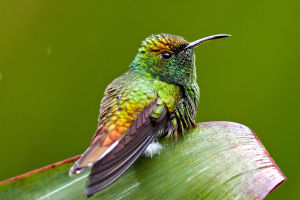Hi Lykkers! Have you ever wondered what life is like for the tallest animal on Earth? Giraffes aren’t just fascinating for their long necks and striking spots; they also have unique social behaviors that make them even more captivating.
Giraffes like to live in groups, known as towers, where they find both companionship and safety in numbers. Let's take a closer look at how these gentle giants interact and why living in groups works so well for them.
Why Do Giraffes Live in Groups?
Like many animals, giraffes benefit from living in groups for several reasons. Safety is one of the biggest advantages. In the wild, giraffes are preyed upon by lions, hyenas, and crocodiles, particularly when drinking water at rivers or watering holes. A single giraffe may be vulnerable, but a group of giraffes can watch for danger from multiple directions, with their impressive height giving them a wide range of vision over the savanna.
Giraffes have been observed forming loosely organized groups where individuals can come and go. Unlike many other social animals, giraffes don’t have a strict hierarchy or permanent group structure. Instead, they gather in these towers for mutual benefit, often creating an atmosphere of calm and shared vigilance.
The Family Life of a Giraffe Tower
A typical giraffe group can range from 5 to 20 members and may include males, females, and calves of various ages. Female giraffes, known as cows, tend to stick together with their offspring, forming what can be thought of as "nursery groups." The adult females help look after each other’s young, giving mothers a chance to feed and rest while knowing their calves are safe.
Male giraffes, or bulls, often live a more solitary life, but they may join groups for brief periods, especially when seeking mates. While females are more social, males form bachelor groups when they’re younger, engaging in playful combat and friendly sparring to develop strength for adulthood.
Giraffes are highly complex social animals, scientists find
Video by Animals Planet
Giraffe Communication: More Than Just Silence
Despite their quiet nature, giraffes are far from being silent animals. They communicate in subtle ways, including body language and low-frequency sounds that humans can’t always hear. Giraffes will often touch necks in a behavior known as necking, which can be a form of social bonding or a way to establish dominance among males.
Giraffes are also known to hum at night! Researchers believe these hums may help individuals keep track of their group members or simply be a form of relaxation, creating an even deeper sense of connection within the tower.
Practical Information for Giraffe Lovers
If you’re planning to see giraffes in the wild, one of the best places to visit is Africa's savannas and open woodlands, especially in countries like Kenya, Tanzania, and South Africa. There are also opportunities to see giraffes up close at many renowned wildlife conservation parks and zoos around the world.
Cost for Safari Visits:
Going on a safari to see giraffes in their natural habitat can cost anywhere from $300 to $1,500 per day, depending on the location and type of experience. Many safaris offer guided tours that highlight the natural behaviors of giraffes and other wildlife, making it an unforgettable adventure for nature lovers.
Giraffe Conservation:
Giraffe populations have been under threat in recent years due to habitat loss and poaching. Conservation organizations such as the Giraffe Conservation Foundation work tirelessly to protect giraffes through research, education, and habitat preservation. Supporting these efforts can help ensure that giraffe towers continue to thrive in the wild for generations to come.
Towering Together
Giraffes may be quiet and gentle, but their social lives are anything but boring. From their loose but effective group structures to their touching maternal bonds, these creatures exemplify how living in groups provides both protection and companionship. So, next time you see a giraffe, remember that there’s more to their story than meets the eye—they’re part of an incredible social structure that has helped them survive and thrive on the African savannas.


